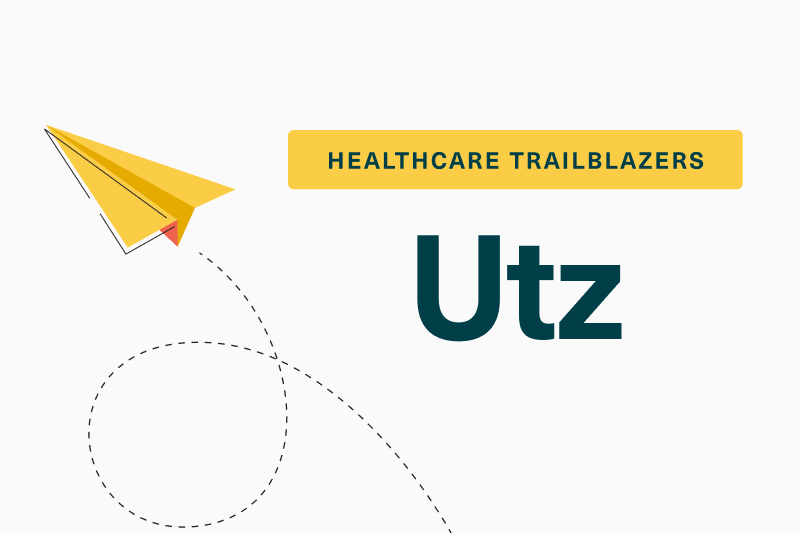Healthcare trailblazers: Utz’s onsite primary care clinic

Healthcare in the U.S. is a broken industry in need of trailblazers.
The U.S. spends roughly double what comparable countries spend on healthcare — but ranks dead last among them in healthcare outcomes, equity, efficiency, and access.
With 50% of Americans getting health insurance through their employers, businesses bear the brunt of this value crisis. Now that healthcare is their second-largest expense, many businesses, large and small, are refusing to accept the exorbitant cost and poor quality of healthcare.
In this series, we highlight businesses that are challenging the status quo by embracing — and, in some cases, pioneering — modern healthcare models. These innovative approaches to healthcare provide increased value at fair prices. The result is better health outcomes and lower costs for employers and employees alike.
Case study: Utz
Utz Quality Foods, more commonly called Utz, is a snack food company based in Hanover, PA. Established in 1921, Utz is well-known for its wide variety of chips, pretzels, and other salty snacks.
Since Dylan Lissette took over as CEO of Utz in 2013, he has doubled the company’s sales to $1 billion, orchestrated ten acquisitions, and taken the company public. But that’s not all: When he took charge, he saw an opportunity to revolutionize the company’s employee healthcare model, and he seized it.
Lissette started tackling rising employee healthcare costs by implementing healthy-living initiatives — such as offering a premium discount for completing a health risk assessment and biometric screening, and building an onsite gym at Utz’s Hanover, PA headquarters. Enabling, teaching, and incentivizing workers to focus on their health can help mitigate and prevent disease within an employee population, thus lowering group healthcare costs over time.
But the company saw inconsistent payoff from those programs and wanted to further contain healthcare costs. Ginger Miller, the health and wellness coordinator for Utz, said the company arrived at its next move by asking, “What is the basis of healthcare?” — according to Miller, “The answer we found was primary care.”
And thus, Utz’s onsite primary care clinic was born in 2016. The Utz Health and Wellness Center enables employees at the Hanover headquarters — and their family members — to conveniently schedule acute care visits, physicals, follow-up visits, labs, and vaccinations at no cost to them. The clinic’s pharmacy also offers free prescriptions for about 50 common generic drugs.
Related: Healthcare trailblazers: Rosen Hotels’ onsite primary care model
The Utz Health and Wellness Center also helped the company take its existing wellness initiatives to the next level, as a primary care clinic is the perfect venue for dietician services, diabetes education programs, and more.
About half of the company’s 3000 employees work at the Hanover plant. As of 2018, 87% of those employees and 67% of their family members were utilizing the onsite primary care clinic. And, in 2019, Utz reported having slowed annual growth in healthcare spending from 7% to 2.6% thanks to the clinic.
The reason onsite primary care clinics are so adept at reducing healthcare spend is that they enable beneficiaries to form long-term relationships with their healthcare providers. Primary care providers (PCPs) know their patients’ medical histories and coordinate all their specialist care, allowing them to gain a comprehensive understanding of their patients’ health over time.
This often helps PCPs detect diseases earlier, manage chronic conditions better, and improve health outcomes more effectively than providers who don’t know their patients as well. On top of that, patients are less likely to postpone or avoid care when it is free, convenient, and provided by a healthcare practitioner they know and trust. And, when illness strikes, they are less likely to turn to less cost-effective options like the ER for care if they have convenient access to their PCP.
While opening an onsite medical clinic is not cheap, it is worth the investment when approached strategically. According to a 2021 report on worksite health centers conducted by Mercer, 43% of companies with worksite health centers that have measured return on investment (ROI) reported an ROI of 1.5:1 or greater, and 31% reported an ROI of 2:1 or greater.
If you’re a small business owner, you might be thinking: There’s no way I can afford to build and staff a primary care clinic for my employees. While that may be true, there are other ways small businesses can access the healthcare cost savings onsite medical clinics offer.
One way is clinic sharing: Activate Healthcare, the company that set up Utz’s clinic, allows multiple small businesses in a given area to aggregate their resources and construct a near-site clinic that collectively serves all of their employees.
Another option is partnering with an insurer that offers plan members $0 access to primary care. Sana MD, for instance, is a health center for advanced primary care in Austin, TX, that is built into most of Sana’s health plans. On top of no-cost primary care visits, Sana members in Austin can access a suite of free wellness services, free labs, and some free procedures at Sana MD.
If you are a small business owner in the Austin area, get a quote from Sana today to learn how you can reap the benefits of Sana MD. Not in Austin? Primary care is still covered — your employees can use the $0 virtual primary care included in our plans, or they can keep seeing their preferred PCP for a low $25 copay.
Our health plans are designed specifically with the needs of small businesses in mind, and we can save you up to 20% on employee health insurance compared to big-name insurance carriers.






